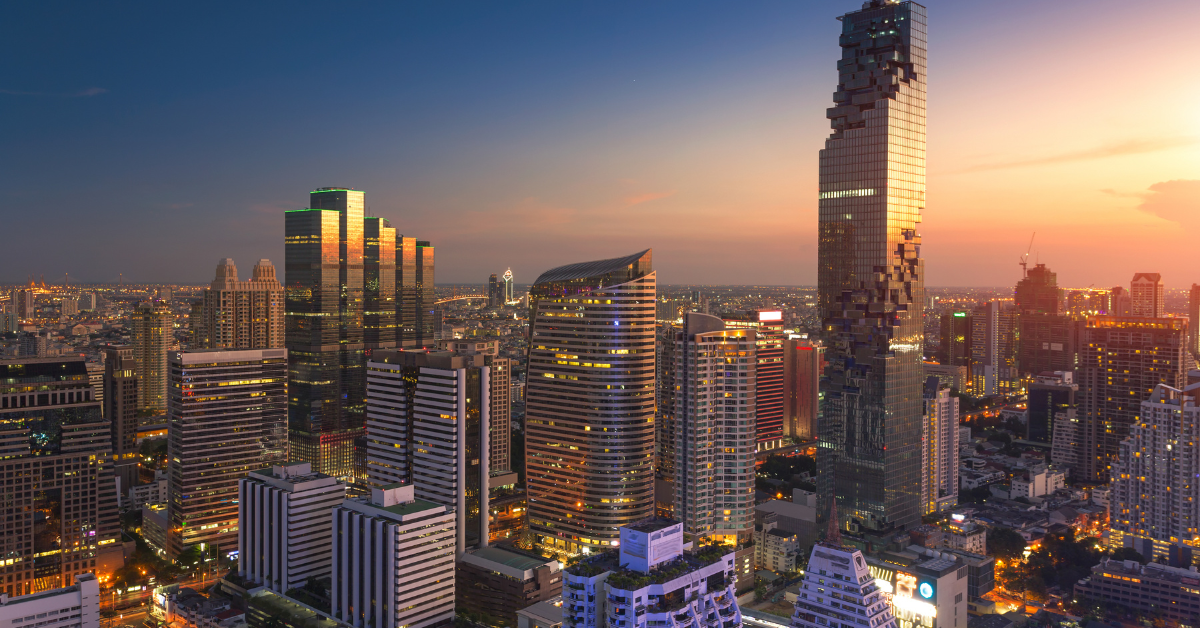Bangkok, the vibrant capital of Thailand, is often written in Katakana in Japan, but in Chinese it appears as “曼谷.” This unique Kanji form sparks curiosity among Japanese readers. Beyond its written form, Japanese impressions of Bangkok are shaped by tourism, culture, lifestyle, and sports, creating a rich and multifaceted image of the city.
- The Kanji Representation “曼谷”
- Japanese Impressions of Bangkok
- Representative Japanese Impressions
- Cost of Living and Japanese Residents’ Views
- Cost of Living Comparison (Approximate)
- Bangkok as a Sports City
- Sports Enjoyable in Bangkok
- Traffic and Urban Challenges
- Japanese Perceptions of Bangkok’s Convenience and Challenges
- Conclusion
The Kanji Representation “曼谷”
Origin in Chinese
The reason Bangkok is written as “曼谷” comes from Chinese transliteration. The official Thai name is “Krung Thep Maha Nakhon” (City of Angels), but in Chinese-speaking regions, the characters “曼谷” were chosen because they approximate the sound. The characters themselves have no direct relation to the features of the city; they were selected purely for phonetic purposes.
Frequency of Use in Japan
In Japan, “曼谷” is rarely seen in everyday use. Travel guides, airline tickets, and official materials almost always use “バンコク” in Katakana. However, in literary works or poetic writing, “曼谷” sometimes appears, evoking an exotic and cultural nuance.
Japanese Impressions of Bangkok
Appeal as a Tourist City
For many Japanese, Bangkok is strongly perceived as a tourist city. The temples, the royal palace, lively markets, and street food are all iconic. The city also offers river cruises and modern shopping malls, making it attractive even for short stays. Another feature is that the city shows different faces by day and night—daytime is about history and culture, while nighttime is about night markets and rooftop bars.
Representative Japanese Impressions
| Perception | Details |
|---|---|
| Tourist City | Temples such as Wat Pho and Wat Phra Kaew, the Grand Palace |
| Food Culture | Street food, Thai curry, Tom Yum Goong |
| Living Costs | Cheaper than Japan, easy for long stays |
| Energetic City | Heavy traffic, lively nightlife |
| Friendly People | Known as the Land of Smiles |
Cost of Living and Japanese Residents’ Views
Prices and Living Environment
One of the strongest impressions Japanese people hold of Bangkok is that “the cost of living is low”. Transportation, food, and housing are relatively affordable, which attracts both long-term residents and retirees. Japanese restaurants, supermarkets, and medical facilities are well established, creating an environment where Japanese people can live with peace of mind.
Cost of Living Comparison (Approximate)
| Item | Japan (Tokyo) | Bangkok |
|---|---|---|
| Rent (1LDK) | About 120,000 yen | About 40,000–60,000 yen |
| Meal (per serving) | About 1,000 yen | About 200–400 yen |
| Transport (train, base fare) | About 150 yen | About 40 yen |
| Medical (consultation) | From about 5,000 yen | From about 1,500 yen |
| Entertainment (cinema) | About 1,800 yen | About 600 yen |
Bangkok as a Sports City
The Presence of Muay Thai
Muay Thai is Thailand’s national sport, and Bangkok is its hub. The Lumpinee and Rajadamnern stadiums host world-class matches, drawing spectators from Japan and beyond. Many Japanese fighters and enthusiasts travel to Bangkok for training, making it a true mecca for martial arts.
Soccer and International Events
Soccer is also popular in Thailand, and Bangkok-based clubs often feature Japanese players. The city also hosts marathons and major sporting events such as the Asian Games, establishing itself as an international sports city.
Sports Enjoyable in Bangkok
| Sport | Features | Connection to Japan |
|---|---|---|
| Muay Thai | National sport, stadium matches | Many Japanese fighters and trainees |
| Soccer | Thriving Thai League | Japanese players active in clubs |
| Running | Marathons and races common | Increasing Japanese participants |
| Golf | Many courses in and near the city | Popular with expats and tourists |
| Badminton | Hosts international competitions | Japanese athletes participate |
Traffic and Urban Challenges
Congestion and Public Transport
Traffic congestion is one of Bangkok’s major issues. Morning and evening rush hours bring long travel times. However, the BTS Skytrain and subway system have greatly improved mobility. For tourists, learning to use these systems helps avoid stress and makes city travel more convenient.
Japanese Perceptions of Bangkok’s Convenience and Challenges
| Aspect | Positive Impression | Points of Caution |
|---|---|---|
| Transport | Easy with BTS and MRT | Road traffic is heavily congested |
| Safety | Generally safe and tourist-friendly | Pickpockets in crowded spots |
| Food | Wide variety, from street stalls to fine dining | Spice level and hygiene may be challenging |
| Cultural Experience | Temples and traditional arts | Dress codes and etiquette required |
| Shopping | From local markets to luxury malls | Price negotiation sometimes needed |
Conclusion
The representation of Bangkok as “曼谷” comes from Chinese transliteration. While rarely used in Japan, it carries a literary and exotic nuance. For Japanese people, Bangkok stands out for its tourism appeal, affordable living costs, and the warmth of its people.
At the same time, the city is increasingly recognized as a hub of sports, from Muay Thai to international competitions. The deepening sports exchange between Thailand and Japan further enriches this perception.
With a strong Japanese community and well-developed infrastructure, Bangkok is also regarded as a comfortable city for long-term stays. Despite issues such as congestion and urban noise, it continues to be a city of diverse attractions that consistently draw people in.






